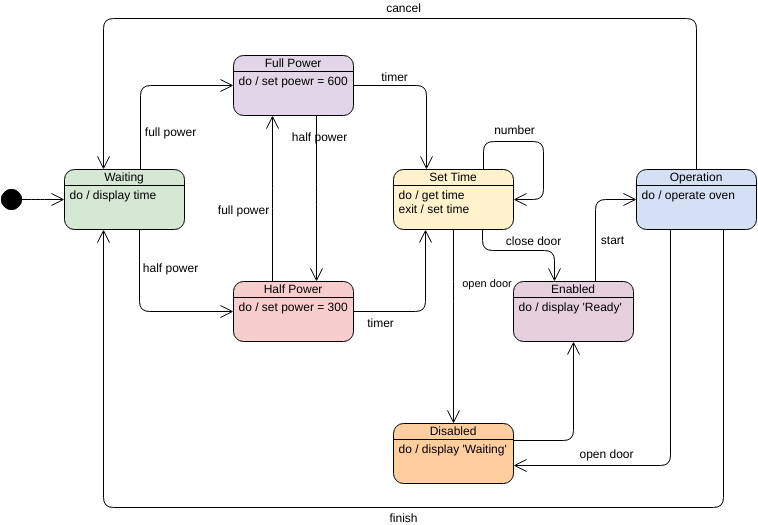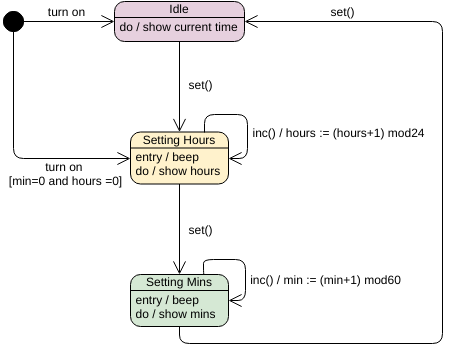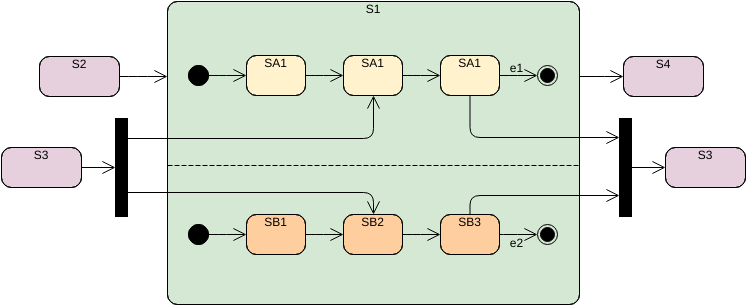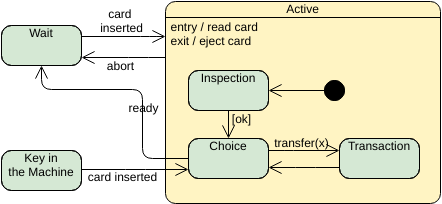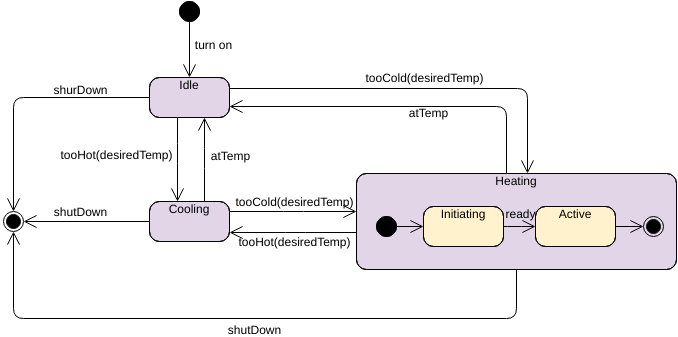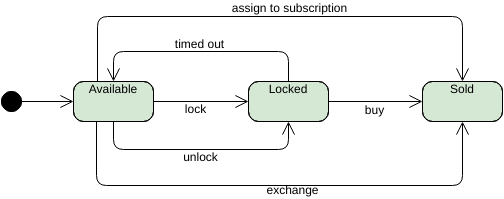Hal-hal perilaku adalah bagian dinamis dari model UML. Ini adalah kata kerja dari sebuah model. Mewakili tindakan dalam waktu dan ruang. Secara umum, ada dua jenis utama hal-hal perilaku.
Dua elemen ini adalah:
- Interaksi
- mesin status
adalah hal-hal perilaku dasar yang dapat Anda masukkan dalam model UML, biasanyadiagram mesin status. Secara semantik, elemen-elemen ini biasanya terhubung dengan berbagai elemen struktural, terutama kelas, kolaborasi, dan objek.
Contoh: Diagram transisi status dari peminjam dan buku di perpustakaan (Edit di editor diagram status online).
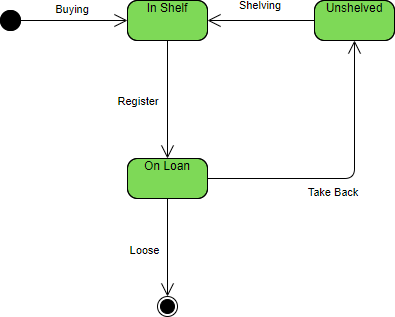
Interaksi
- Pertama, interaksi adalah perilaku yang terdiri dari serangkaian pesan yang dipertukarkan di antara sekumpulan
objek dalam konteks tertentu untuk mencapai tujuan tertentu. - Perilaku dari suatu masyarakat objek atau dari suatu operasi individu dapat ditentukan dengan interaksi.
- Sebuah interaksi melibatkan sejumlah elemen lain, termasuk: pesan, urutan tindakan (perilaku yang dipicu oleh pesan), dan tautan (hubungan antara objek).
- Secara grafis, sebuah pesan digambarkan sebagai garis terarah, hampir selalu mencakup nama operasinya.
![]()
Status
Kedua, mesin status adalah perilaku yang menentukan urutan status yang dilalui oleh sebuah objek atau
interaksi selama masa hidupnya sebagai respons terhadap peristiwa, bersama dengan responsnya terhadap
even tersebut. Perilaku dari sebuah kelas individu atau kolaborasi kelas dapat ditentukan
dengan mesin status. Mesin status melibatkan sejumlah elemen lain, termasuk status,
transisi (aliran dari status ke status), peristiwa (hal-hal yang memicu transisi), dan aktivitas (
respons terhadap transisi).

Secara grafis, sebuah status digambarkan sebagai persegi panjang membulat, biasanya mencakup namanya dan sub-statusnya, jika ada.
Perhatikan bahwa: Sebuah diagram status menunjukkan mesin status, yang terdiri dari status, transisi, peristiwa, dan aktivitas.Diagram statusmenyampaikan pandangan dinamis dari sebuah sistem. Mereka sangat penting dalam memodelkan perilaku antarmuka, kelas, atau kolaborasi dan menekankan perilaku terurut berdasarkan peristiwa dari sebuah objek, yang sangat berguna dalam memodelkan sistem reaktif.
Contoh: Diagram Status ATM
Sekarang mari kita lihat diagram transisi status dari sistem ATM. Di sini, Anda akan melihat apa yang terjadi ketika seorang pelanggan menggunakan kartu ATM untuk melakukan transaksi:
- Ketika seorang pelanggan memasukkan kartu bank atau kartu kredit ke dalam pembaca kartu ATM, ATM melakukan tindakan input, yaitu membaca kartu.
- Jika kartu tidak valid, mesin melakukan tindakan keluar.
- Setelah kartu berhasil dibaca, ATM akan meminta nomor PIN.
- Pelanggan kemudian memasukkan kata sandi dan ATM membacanya.
- Jika Anda memasukkan kata sandi yang tidak valid, mesin akan keluar. Jika PIN yang dimasukkan valid, mesin akan memproses transaksi lebih lanjut.
- Setelah transaksi berhasil, mesin akan melakukan tindakan keluar, yaitu kartu muncul, kartu pelanggan dikeluarkan.
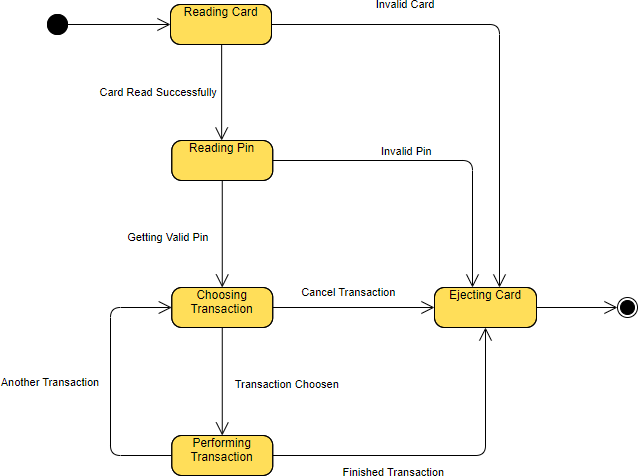
Diagram Transisi Status untuk sistem ATM
Pelajari Lebih Lanjut dengan Contoh Diagram Status berikut
This post is also available in Deutsch, English, Español, فارسی, Français, 日本語, Polski, Portuguese, Ру́сский, Việt Nam, 简体中文 and 繁體中文.














